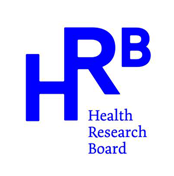
Despite the almost constant news coverage, obesity remains a top five killer both globally (1) and in Ireland (2) with no solution to this omnipresent challenge yet identified to date. Considering that obesity, once present, is likely to track into later life (3), early prevention in the youngest children, before unhealthy habits can be internalised and children’s environments become increasingly complex, appears to be the most promising approach (4).
In a recent secondary analysis of the Growing Up in Ireland infant cohort data, we investigated children’s body mass index (BMI) in relation to a broad set of obesity risk factors. Data were collected from 11,000 children and their caregivers (hereafter referred to as ‘parents’) when children were nine months old, and again when they reached the ages of three and five years.
Longitudinal analysis revealed that children born large for their gestational age or who gained weight rapidly in the first nine months of life had much higher BMI scores than children with small or appropriate birth weight, or with normal infant weight gain, respectively. While this is not surprising nine months after birth, these relationships remained strong at the later ages studied, independent of other risk factors.
The effective prevention of childhood obesity hence should start in family-planning adults and target the family as a whole. This proposal is supported by the strong association that we observed between parental obesity and children’s BMI, which led to increasing discrepancies in BMI between children of healthy-weight and obese parents as children grew older. Interventions should additionally account for psychosocial barriers in the family environment, as single children and children in lone-parent households had increasingly higher BMIs than their counterparts with siblings in two-parent households.
Furthermore, our longitudinal research identified widening socio-economic differences between the BMI of children. Consequently, interventions should reach out to families with lower educational levels and those living in rural regions, as well as to children in non-institutional childcare. Behaviours that should be targeted are the compliance with sleep recommendations and a minimisation of screen-based activities.
This study shows the multi-faceted nature of the ‘obesity epidemic’. Many risk factors for elevated BMI were present in this cohort by the age of three years. Importantly, while birth and infancy-related factors led to the highest variations in children’s BMI, there was a high chance that children belonged to several other risk groups that cumulatively may predispose them to develop critical weight states by the age of five years. Thus, risk factors may best be targeted jointly through effective policy-making and an early focus on families’ lives. This may require various actors in Ireland to collaborate and increase the dialogue across (policy) sectors (5). Prevention strategies should simultaneously aim at reducing the identified inequalities and target modifiable risk factors on population level, as isolated efforts may likely remain ineffective.
Samira B. Jabakhanji
PhD student, Royal College of Surgeons in Ireland
Contact: samirajabakhanji@rcsi.ie
This research was supported by the Irish Research Council. The corresponding research paper was co-authored by Dr. Fiona Boland, Dr. Mark Ward and Dr. Regien Biesma.
References:
1. European Association for the Study of Obesity (EASO). Obesity Facts & Figures [updated 2013]. Available from: http://easo.org/education-portal/obesity-facts-figures/.
2. Institute for Health Metrics and Evaluation. Ireland. Country profiles.
3. Simmonds M, Llewellyn A, Owen CG, Woolacott N. Predicting adult obesity from childhood obesity: a systematic review and meta-analysis. Obesity reviews: an official journal of the International Association for the Study of Obesity. 2016;17(2):95-107.
4. Boone-Heinonen J, Messer L, Andrade K, Takemoto E. Connecting the Dots in Childhood Obesity Disparities: A Review of Growth Patterns from Birth to Pre-Adolescence. Current epidemiology reports. 2016;3(1):113-24.
5. Hennessy M, Byrne M, Laws R, Mc Sharry J, O’Malley G, Heary C. Childhood obesity prevention: priority areas for future research and barriers and facilitators to knowledge translation, coproduced using the nominal group technique. Translational behavioral medicine. 2018.

